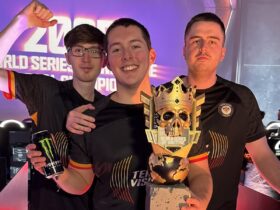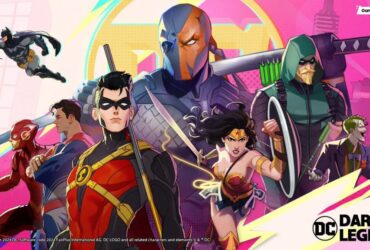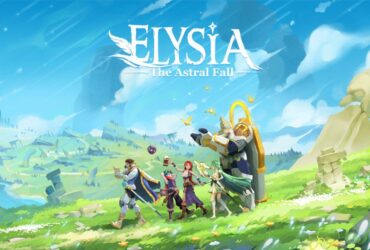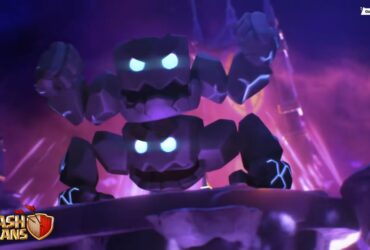



If you’ve spent any time in DC: Dark Legion, you’ll know the game isn’t just about powering up your favorite heroes or villains. Sure, seeing Superman crush enemies or The Joker cause chaos is thrilling, but there’s more to this base-building game. And that’s Leagues. First time hearing about it? Well, our DC: Dark Legion League Guide will break it down for you.
This DC: Dark Legion Guide breaks down everything you need to know about leagues, from features like Tech Research and League Help to high-stakes modes like Coordinated Assault. By the end, you’ll know exactly why joining an active league isn’t optional; it’s mandatory if you want to thrive.
Also, for a great start, check out our Beginner’s Guide, Tier List, and Redeem Codes article. Planning? Use our Team Composition Guide to ensure your heroes are battle-ready. And our Customer Support is available if you need any help.
Introducing Leagues in DC: Dark Legion
A League is a structured organization of up to 100 players who band together to grow stronger. And if you’ve played other strategy titles, leagues are like guilds or clans. They provide members with extra help, shared resources, and access to events that simply don’t exist for solo players.
Think of leagues as the game’s version of guilds or alliances. They’re not just social hubs; they’re your ticket to faster progression, better rewards, and epic large-scale battles you could never win alone. So whether you’re a casual player who wants a supportive group or a hardcore competitor aiming for the top, mastering the league system is essential.
Leagues unlock after you reach a certain progression milestone in the game. At that point, you’ll have two choices:
- Create your own league.
- Or join an existing league, ideally one with active members who can help you grow.
The benefits of joining a league in DC: Dark Legion kicks in right away. Once you’re part of one, you unlock a range of powerful features that make your progress faster and more rewarding. You’ll gain access to League Tech Research, which provides buffs and bonuses shared among all members. There’s also League Help, where fellow members can assist you with speed-ups and resources.

You’ll also enjoy League Chests, which are communal rewards earned through member activity and contributions. Then there are War Battles and Rifts, thrilling team-based PvE and PvP challenges that test your coordination and strategy while offering generous loot. Finally, the League Store lets you spend your league contributions on exclusive items you won’t find anywhere else.
In short, going solo in DC: Dark Legion means missing out on some of the best rewards, bonuses, and teamwork-driven content the game has to offer. So joining a league doesn’t just make the game more fun, but also supercharges your entire experience.
League Features in DC: Dark Legion
League Tech Research
One of the biggest perks of being in a league is access to League Tech Research, which functions like a giant shared skill tree for your entire team. When members donate resources (cash or gems), the league accumulates points that can be spent to unlock powerful boosts.

The best part? These boosts benefit every member in the league equally and are permanent once unlocked. That means even if you’re a free-to-play player, you’ll still enjoy premium-quality buffs just for being in an active league that consistently donates and researches.
League Chests
Every active league lives for its chests. League Chests are shared rewards that drop when members complete activities like helping others, winning battles, or finishing missions.

- Common Chests – These are frequent and typically contain basic rewards, such as alloy or small amounts of resources.
- Rare Chests – These are much harder to get and contain more premium items like hero shards or larger amounts of alloy.
The great thing about league chests is that they reward everyone, not just the person who triggers them. That means the more active your league is, the more free loot you’ll get every day.
League Members
Leagues can hold up to 100 players, but not everyone has the same role. The system is hierarchical, divided into ranks from R1 to R5:
- R5 – The leader, with full control of the league. They can start events, kick members, assign roles, and initiate wars.
- R4 – Co-leaders who assist the R5. They can manage members, assign roles, and start events.
- R3 – Senior members who usually serve as long-standing contributors. They can assign some roles, but don’t have high-level control.
- R2 & R1 – General members and newcomers. They don’t hold special powers but still benefit from league perks and can request/offer help.
This system ensures leagues stay organized while still allowing new players to contribute and grow.
League Help
League Help is one of the most underrated but powerful features. It allows you to ask other members for help in speeding up construction or research timers and request resource assistance to complete builds. Also, help others in return to earn contribution points and rewards.

Each player has a daily cap on how much help they can receive, but there’s no cap on how much help you can give. This creates a healthy loop: the more you support your league, the more active it becomes. So log in daily and request help whenever possible. Over weeks and months, those little boosts add up to huge time savings.
Store
The League Store is where your contributions pay off. By donating, helping members, or joining wars, you earn league currency, which can then be exchanged for exclusive items.

Some of the best rewards in the store include:
- World Anvil Fragments, which are used to summon top-tier heroes.
- Alloy and crafting resources.
- Hero shards and upgrade materials.
- Speed-ups for building and research.
The store’s inventory is tied to your league’s level, meaning the stronger your league grows, the better the shop becomes.
Coordinated Assault
Finally, the highlight of league activity: Coordinated Assault, also known as War Battles. This is where leagues truly flex their power.
In this mode:
- You can launch an assault on a specific boss or enemy.
- Up to five members can join your rally.
- Each battle requires a jet, unlocked through progression. To use all five attack slots, you’ll need to reach level 225 and unlock every jet.
- Battles are timed and require coordination since the squads you send can’t be used elsewhere until the war ends.
The rewards for successful assaults are worth it: summoning cubes, alloy, intel, experience, and even hero shards. Stronger bosses offer even juicier loot, but they also demand higher power levels to challenge. And winning wars doesn’t just help you personally, it boosts your league’s reputation and gives bonus rewards to every member.
Final Thoughts
At first glance, leagues in DC: Dark Legion might seem like just another “guild system,” but they’re so much more than that. They’re the backbone of late-game progression. Without a league, you’ll hit a wall where your heroes, no matter how strong, simply can’t keep up.
From Tech Research that provides permanent buffs to League Help that shaves hours off your construction timers, to Coordinated Assaults that unlock loot, everything about leagues is designed to give you an edge. And because rewards scale with league activity, the more committed your group is, the more everyone benefits.
Check our other guides below:
Did you find this DC: Dark Legion League Guide useful? Let us know in the comments below!
For more Mobile Gaming news and updates, join our WhatsApp Channel, Telegram Group, or Discord server. Also, follow us on Instagram, Twitter, and Google News for quick updates.
Source link












Leave a Reply